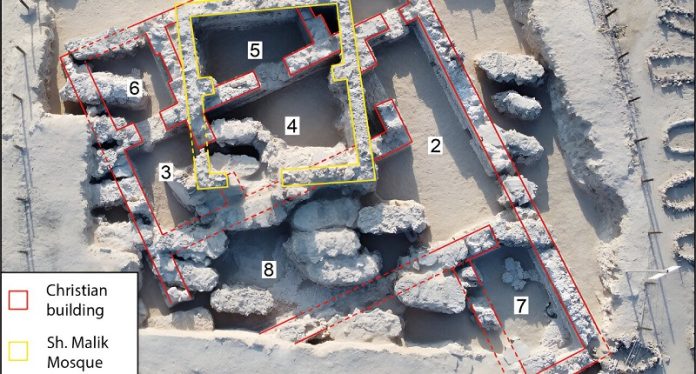
Archaeologists have uncovered one of the earliest known Christian buildings in the Arabian Gulf, located in Samahij, Bahrain.
This finding is significant as it offers the first physical evidence of an ancient Christian community in the region.
Christianity in the Gulf is not commonly known today, but the Church of the East, also known as the Nestorian Church, was once widespread.
This church existed in the area until the population largely converted to Islam, starting in 610 CE.
The building in Samahij was in use from the mid-4th century to the mid-8th century, according to radiocarbon dating. It was abandoned when the local population converted to Islam. The structure was discovered by British and Bahraini archaeologists under a mound in a village cemetery.
The excavation revealed a large building with eight rooms, including a kitchen, a dining room, a possible workroom, and three living rooms. Remarkably, it survived because a mosque was later built on top of it.
Historians believe the building might have been the residence of the Bishop of the diocese known as Meshmahig or Mašmahig, which is an old name for Samahij. Historical records show that the relationship between Meshmahig and the central church authorities was sometimes difficult, with bishops being excommunicated or condemned for various reasons.
Previously, only a few Christian buildings, such as churches and monasteries, had been found in remote areas of Iran, Kuwait, the United Arab Emirates, and eastern Saudi Arabia. Most of these were from a later period. The Samahij building is unique because it is located in the heart of a modern village.
The building was well-constructed with stone walls and plastered interiors. It had plaster floors, and sockets and holes indicated where doors and benches had been fixed. The kitchen contained several hearths made from amphorae, which are large storage vessels.
The people who lived there had a good standard of living. They ate pork, which stopped after the Islamic conversion, fish, shellfish, and various crops.
They also traded with India, as indicated by the discovery of carnelian beads and pottery from India. The community used glassware, including small wine glasses, and copper coins from the Sasanian Empire.
Artifacts like spindle whorls and copper needles suggest they produced textiles for worship. The Christian identity of the inhabitants is confirmed by three plaster crosses and graffiti with early Christian symbols like the Chi-Rho and a fish.
Professor Timothy Insoll from the University of Exeter and Dr. Salman Almahari from the Bahrain Authority for Culture and Antiquities led the excavation project from 2019 to 2023. Professor Insoll noted, “We were amused to find someone had drawn part of a face on a pearl shell in bitumen, perhaps for a child who lived in the building.”
A museum is being developed at the site to preserve and display these findings, and it is set to open in 2025. This discovery provides a fascinating glimpse into the lives of an ancient Christian community in Bahrain.



